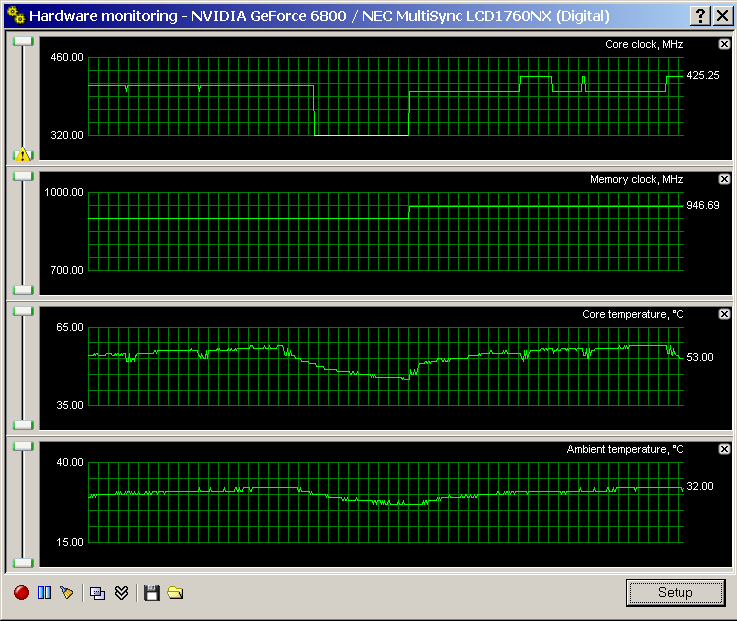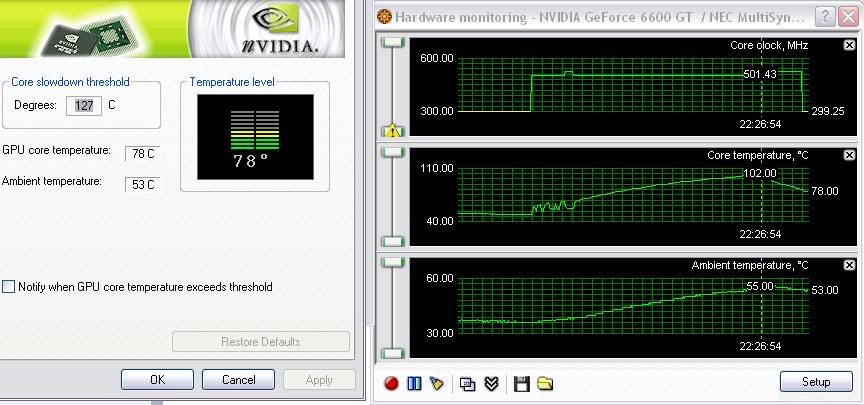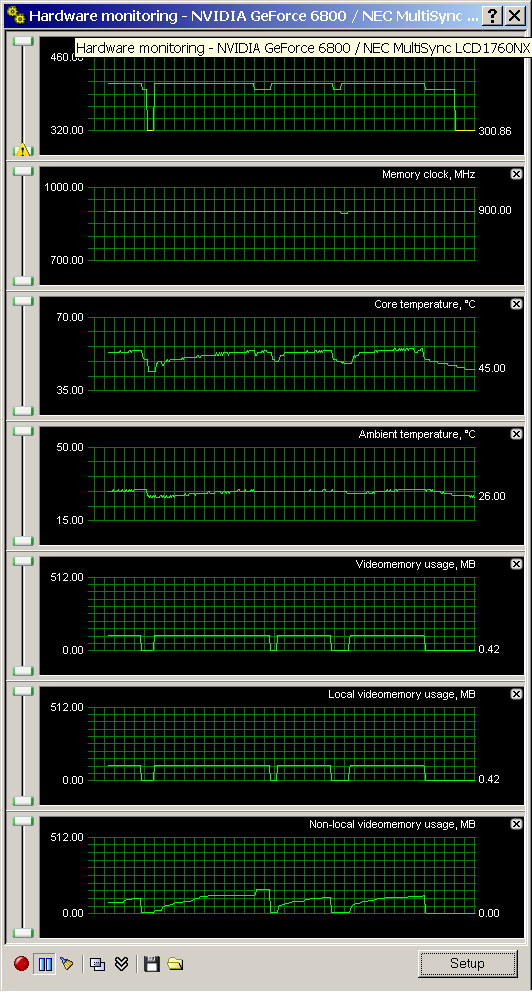are these the small dips to 3D throttle you are talking about (far left)? They dont always happen. Sometimes there, sometimes not.

I know about setting 2d/thrtl/3d to the same, and tried various variations of that.. the result is same as with rivatuner force performance level, or clocks different.. it will throttle regardless. When I modified BIOS with 04900605, which should be 150, it shows 127C. I know how slowdown threshold is "supposed" to work, but hey maybe they made mistake and it throttles at 127F not 127C.. hey I'm just trying to eliminate all the possibilites.
Ok, for the sake of argument, forget everything I said before, and just focus on these two examples:
Couple nights ago, I'm tinkering around trying to get 425/950 stable. I'm trying to capture measurments at the moment the flash, stutter, and throttling starts. (measuring various voltages on the PCB like Vref, Vgpu, Vddr, etc, +5V, +12V) So, I first heat up the card by running ATITool for ~15min at 410/900.. good, its nearly up to 60 C. I fire away 425/950 3DMark2005, expecting throttle any moment. 3 full runs, full-speed scores.. NOTHING. In the meanwhile, despite the fact I quikcly click to test again, rivatuner is showing the card is cooling. Finally, it happens during 4th run. Highest temperatures were recorded before the 3DMark runs, and each one slightly cooler... would you say this is an indicator that heat is not an issue? I leave computer idle for about an hour, come back and run same settings again, but it doesn't just throttle.. discoloration artifacts. Next morning (very cool, card cold) I try to resume my testing, but artifacts are even worse. So, would you agree heat is not an issue?
If I could get your 410/900 perfectly stable I would be 100% happy. However, I play BF2 for ~0.5hr and it throttles.. Ok, so I lower to 400.. ~5min later throttle. Hmm.. so I change mem to 800 (410/800). Nope, still throttle. Lower both? Yes! 400/800 is working.. but after ~0.5hr it does it again. So this pretty much explains why I typically ran the card at 370/740 (below the lowest driver test failed on for each.. ie although driver test typically fails around 800 for memory, it once went as low as 754). Even though sometimes 3DMark05 finishes as high as 425/950, and many times at 410/900, it will still throttle if either or both GPU and MEM are clocked high. Especially sensitive to Splinter Cell: Chaos Theory (HDR, SM3 more power demand?).






 Reply With Quote
Reply With Quote






Bookmarks